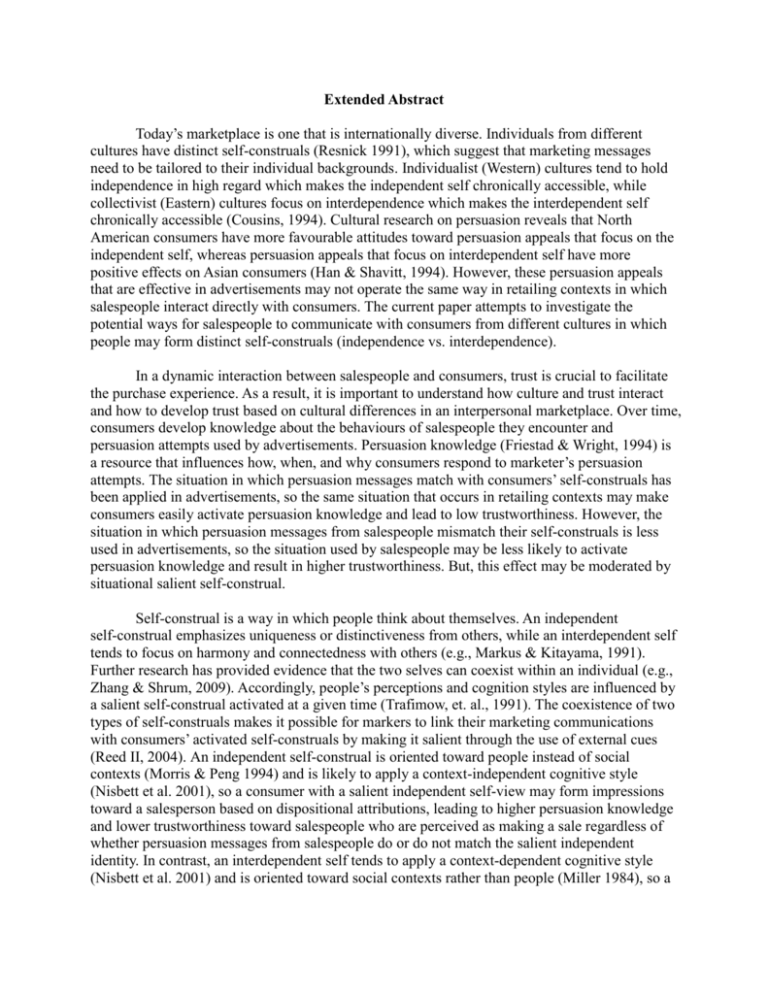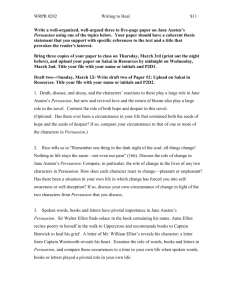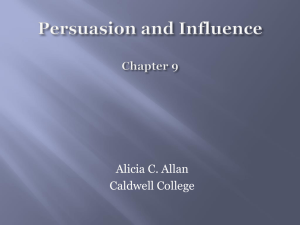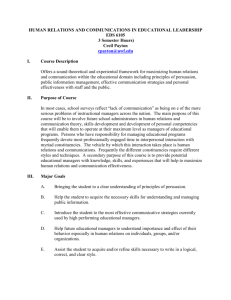Self-identity is a symbol of an individual
advertisement

Extended Abstract Today’s marketplace is one that is internationally diverse. Individuals from different cultures have distinct self-construals (Resnick 1991), which suggest that marketing messages need to be tailored to their individual backgrounds. Individualist (Western) cultures tend to hold independence in high regard which makes the independent self chronically accessible, while collectivist (Eastern) cultures focus on interdependence which makes the interdependent self chronically accessible (Cousins, 1994). Cultural research on persuasion reveals that North American consumers have more favourable attitudes toward persuasion appeals that focus on the independent self, whereas persuasion appeals that focus on interdependent self have more positive effects on Asian consumers (Han & Shavitt, 1994). However, these persuasion appeals that are effective in advertisements may not operate the same way in retailing contexts in which salespeople interact directly with consumers. The current paper attempts to investigate the potential ways for salespeople to communicate with consumers from different cultures in which people may form distinct self-construals (independence vs. interdependence). In a dynamic interaction between salespeople and consumers, trust is crucial to facilitate the purchase experience. As a result, it is important to understand how culture and trust interact and how to develop trust based on cultural differences in an interpersonal marketplace. Over time, consumers develop knowledge about the behaviours of salespeople they encounter and persuasion attempts used by advertisements. Persuasion knowledge (Friestad & Wright, 1994) is a resource that influences how, when, and why consumers respond to marketer’s persuasion attempts. The situation in which persuasion messages match with consumers’ self-construals has been applied in advertisements, so the same situation that occurs in retailing contexts may make consumers easily activate persuasion knowledge and lead to low trustworthiness. However, the situation in which persuasion messages from salespeople mismatch their self-construals is less used in advertisements, so the situation used by salespeople may be less likely to activate persuasion knowledge and result in higher trustworthiness. But, this effect may be moderated by situational salient self-construal. Self-construal is a way in which people think about themselves. An independent self-construal emphasizes uniqueness or distinctiveness from others, while an interdependent self tends to focus on harmony and connectedness with others (e.g., Markus & Kitayama, 1991). Further research has provided evidence that the two selves can coexist within an individual (e.g., Zhang & Shrum, 2009). Accordingly, people’s perceptions and cognition styles are influenced by a salient self-construal activated at a given time (Trafimow, et. al., 1991). The coexistence of two types of self-construals makes it possible for markers to link their marketing communications with consumers’ activated self-construals by making it salient through the use of external cues (Reed II, 2004). An independent self-construal is oriented toward people instead of social contexts (Morris & Peng 1994) and is likely to apply a context-independent cognitive style (Nisbett et al. 2001), so a consumer with a salient independent self-view may form impressions toward a salesperson based on dispositional attributions, leading to higher persuasion knowledge and lower trustworthiness toward salespeople who are perceived as making a sale regardless of whether persuasion messages from salespeople do or do not match the salient independent identity. In contrast, an interdependent self tends to apply a context-dependent cognitive style (Nisbett et al. 2001) and is oriented toward social contexts rather than people (Miller 1984), so a consumer with a salient interdependent identity may rely more on situational attributions as opposed to dispositional ones. H1: When an independent self is salient, persuasion attempts either matching or mismatching with salient independent self will make no difference in terms of consumers’ perceptions of trustworthiness toward salespeople. However, when interdependent self is primed, persuasion attempts mismatching with a salient interdependent self will lead to higher trustworthiness than matching persuasion attempts. Study 1 This was a 2 (Persuasion attempt: focus on independent self-construal vs. focus on interdependent self-construal) × 2 (self-construal priming: independence vs. interdependence) between-subjects design (N=60). Half of the participants were presented with 18 scrambled sentences to activate an independent self and the other half were given sentences to activate an interdependent self (Skrull, 1978). Next, all participants were asked to image an interaction with a salesclerk where they were going to buy a camera. Half of participants were told “That’s a great camera. Whenever you are together with family and friends, you can take pictures with them….” (focus on interdependent self-construal). The remaining was told: “That’s a great camera. Whenever you go for a trip, you can take those impressive and unique pictures….” (focus on independent self-construal). The primary dependent measure was trustworthiness (α=0.74). Results showed a significant interaction between persuasion attempt and self-construal priming (F (1,55)=4.52, p<0.05) and a main effect of priming (F=5.52, p<0.05). As expected, when participants were primed with an independent self-construal, a persuasion attempt that either matched or mismatched their salient independent self-identity made no difference in terms of trustworthiness toward the salesperson, whereas when participants were primed with an interdependent self-construal, a persuasion attempt mismatching the salient interdependent self resulted in higher trustworthiness than one matching with salient interdependent self. This result supported H1. Discussion Overall, this study contributes to the literature by demonstrating the different effect of persuasion attempts which match or mismatch with consumers’ temporarily activated self-construals (interdependence versus independence) in retailing contexts as compared to its effect in advertisement. Prior research finds that when persuasion attempts match with either an independent or interdependent self, there is a positive evaluation toward ads (e.g., Aaker & Maheswaran 1997). However, the current study indicates that in interpersonal settings, messages from salespeople have little influence for consumers whose independent self-view is accessible. In contrast, messages mismatching with consumers’ interdependent self led to higher trustworthiness than matching messages. This finding suggests that a salient self may play a role when trying persuasion attempts. In future, we would like to identify marketing related self-construal priming and also test the robustness of the result by using participants from different cultures, as research shows that people in Western cultures tend to hold independent self, while people from Eastern cultures focus on interdependent self (Cousins, 1994). References Aaker, J. & Maheswaran, D. (1997). The effect of cultural orientation on persuasion. Journal of Consumer Research, 24 (December), 315-328. Babin, B.J., Boles, J.S., & Darden, W.R. (1995). Salesperson stereotypes, consumer emotions, and their impact on information processing. Journal of the Academy of Marketing Science, 32(2), 94-105. Cousins, S. & Maheswaran, D. (1994). Heuristic processing can bias systematic processing: Effects of source credibility, argument ambiguity and task importance on evaluation judgments. Journal of Personality and Social Psychology, 56, 124-131. Friestad, M.R., & Wright, P. (1994). The persuasion knowledge model: How people cope with persuasion attempts. Journal of Consumer Research, 21, 1-31. Han, S-P. & Sharon, S. (1994). Persuasion and culture: Advertising appeals in individualistic and collectivistic societies. Journal of Experimental Social Psychology, 30(4), 326-35. Main, K.J., Dahl, D.W., & Darke, P.R. (2007). Deliberative and automatic bases of suspicion: empirical evidence of the sinister attribution error. Journal of Consumer Psychology, 17(1), 59-69. Markus, H.R. & Kitayama, S. (1991). Culture and the self: Implications for cognition, emotion, and motivation. Psychological Review, 20, 569-579. Miller, J.G. (1984). Culture and the development of everyday social explanation. Journal of Personality and Social Psychology, 46, 961-978. Morris, M.W. & Peng, K. (1994). Culture and cause: American and Chinese attributions for social and physical events. Journal of Personality and Social Psychology, 67, 949-971. Nisbett, R.E., Peng, K., Choi, I., & Norenzayan, A. (2001). Cultureand systems of thought: Holistic versus analytic cognition. Psychological Review, 108, 291-310. Reed II, A. (2004). Activating the self-importance of consumer selves: Exploring identity salience effects on judgments. Journal of Consumer Research, 31(September), 286-295. Resnick, L.B. (1991). Shared cognition: Thinking as social practice, in Perspectives on Socially Shared Cognition, Lauren B. Resnick, John M.Levine, and Stephanie D. Teasley, Washington, DC: American Psychological Association, 1-20. Trafimow, D., Triandis, H.C., & Goto, S.G. (1991). Some tests of the distinction between the private self and the collective self. Journal of Personality and Social Psychology, 60, 649-655. Zhang, Y. & Shrum, L.J. (2009). The influence of self-construal on impulsive consumption. Journal of Consumer Research, 35(February), 838-850.






